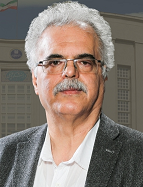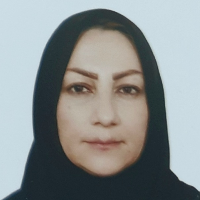Identifying the Consumption Pattern of Inpatient Services in the Elderly Covered by Armed Forces Health Insurance in 2018
Aging growth and changes in the pattern of diseases in this crowd, cause exponential growth of costs. The aging of population is a demographic and epidemiological phenomenon; however, it requires socioeconomic solutions and healthcare management. The health services required by the insured population vary according to age and demographic conditions. Therefore, it seems necessary to pay attention to the epidemiological and demographic developments of the population to determine the critical measures for effective planning. Furthermore, the aging of population has increased the financial burden of social security systems; it is necessary to consider appropriate measures in this area. Population aging is an opportunity for the insurer organizations; the receivers of the healthcare services might be threatened in the lack of adequate planning. Thus, this study aimed to identify the consumption pattern of inpatient services in the insured elderly covered by the Armed Forces Health Insurance in 2018.
This descriptive–analytical study was of a cross–sectional design. The study statistical population included the elderly aged ≥60 years who were classified in three age categories (60–69 years, 70–79 years, ≥80 years), and used hospital services of the contracted and non–contracted hospitals with the Armed Forces Health Insurance in 2018, where inpatient medical records were filed for them. The number of samples in this study, considering the minimum number required for relational research (causal–comparative), according to Krejcie and Morgan (1970) (who stated that for the communities of ≥100000, 384 individuals suffices), 491 subjects were selected by random stratified sampling method as the research sample from the three mentioned groups of the elderly. The study inclusion criterion was having ≥60 years of age by the beginning of 2018. As per the study exclusion criteria, according to the information provided in the insurance system of the organization, the elderly should have not experienced concurrent overlapping access to inpatient services. In total, the study samples were hospitalized 1330 times, on a temporary or permanent basis, in the contracted and non–contracted hospitals. Accordingly, from each age group of the elderly, the first 100, the second 100, etc. were randomly selected from the inpatient services consumption data, i.e., extracted from the medical documents. We also considered the payroll reports of Organization Database (Oracle); these data were then analyzed using SPSS. In this study, the Kruskal–Wallis test was employed to examine the between–group differences. Additionally, if the Kruskal–Wallis test result was significant, Mann–Whitney U post–hoc test with the adjustment of p–value was applied. The desired significance level was 0.05.
In this study, the default normality of the data was checked using the Shapiro–Wilk test. The relevant results indicated that the data of this study were significantly different from the normal curve. Therefore, non–parametric tests were used to examine between–group differences. The mean±SD duration of stay of the studied elderly was 5.58±1.5 days. The largest proportion of the total hospitalization days of the elderly samples was related to the cardiac ward by 252(18.95%) insured subjects; respecting the type of service, this rate belonged to the coronary artery bypass with the mean±SD duration of 8.17±4.70 days. Among the referrals for hospitalization, the hospitals of contracted military/corps nature were the most visited military hospitalization center. The least–cost was paid for the radiotherapy ward (1.041.871 Rials) and the highest was paid for the cardiology ward (8.593.036.458 Rials). There was a significant relationship between the mean stay duration at different wards and the service type (p=0.001). Moreover, there was a significant difference between the treatment costs in different age groups (p<0.001). The highest–paid expenses were related to cardiovascular care services and the younger group of elderly. The obtained data suggested that older women’s cost of hospitalization (18.531.525 Riala) was significantly more than that in men (16.701.832 Rials) (p=0.041).
Based on the current research findings, the highest–burden and cost of hospitalization of the elderly belonged to cardiovascular diseases. Thus, planning to expand insurance organization commitments to prevent the occurrence of such diseases is necessary. Such issues could reduce the quality of life and present premature disability in the elderly. It is also crucial to address the phenomenon of population aging.
- حق عضویت دریافتی صرف حمایت از نشریات عضو و نگهداری، تکمیل و توسعه مگیران میشود.
- پرداخت حق اشتراک و دانلود مقالات اجازه بازنشر آن در سایر رسانههای چاپی و دیجیتال را به کاربر نمیدهد.



